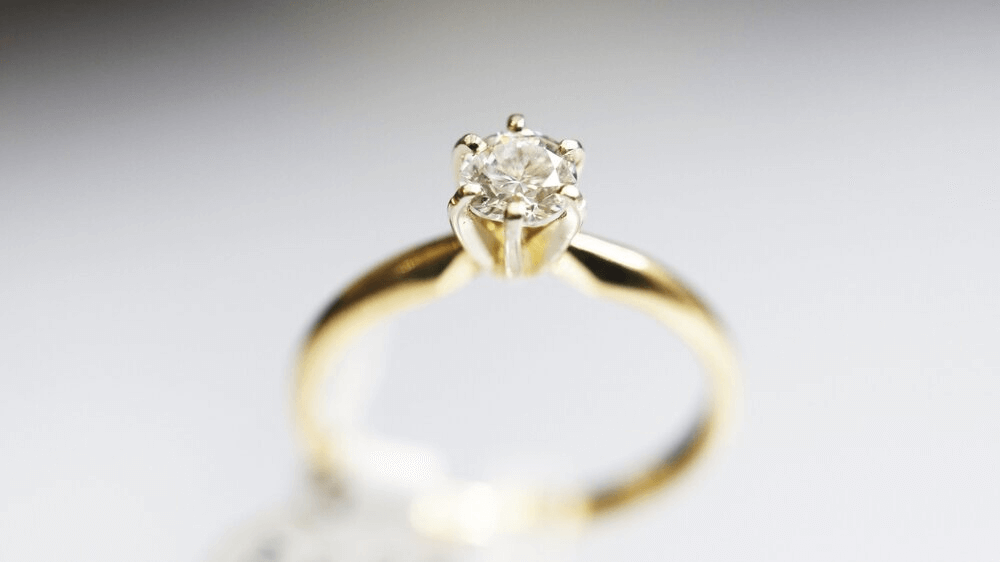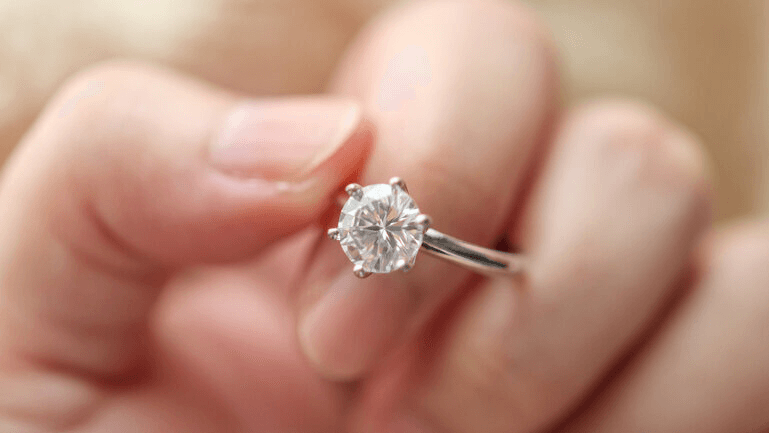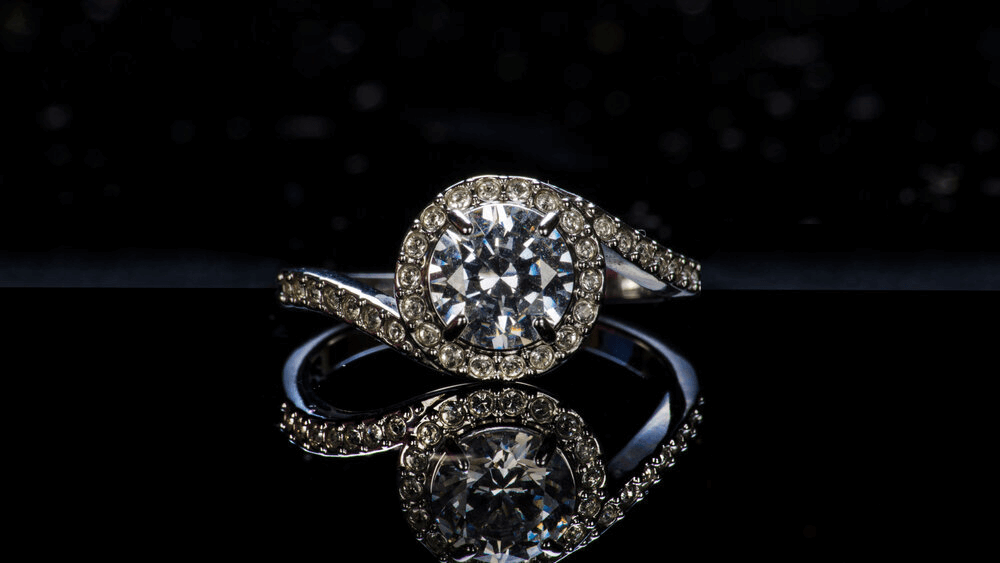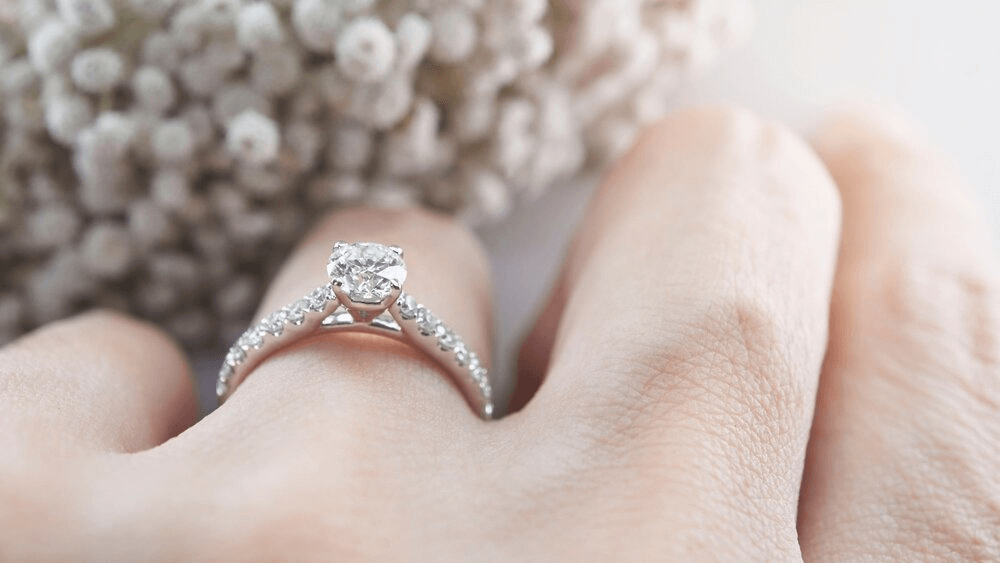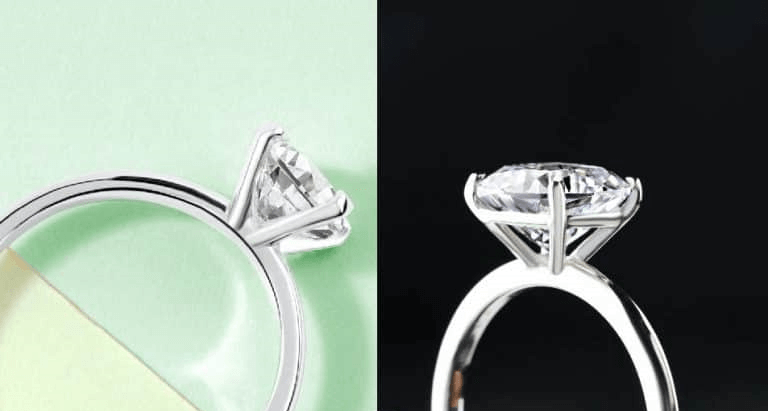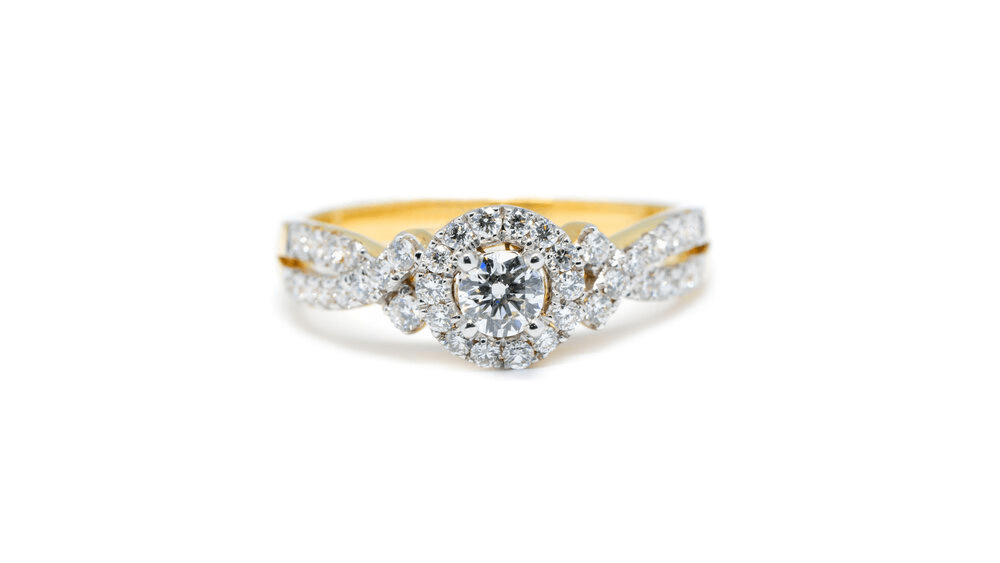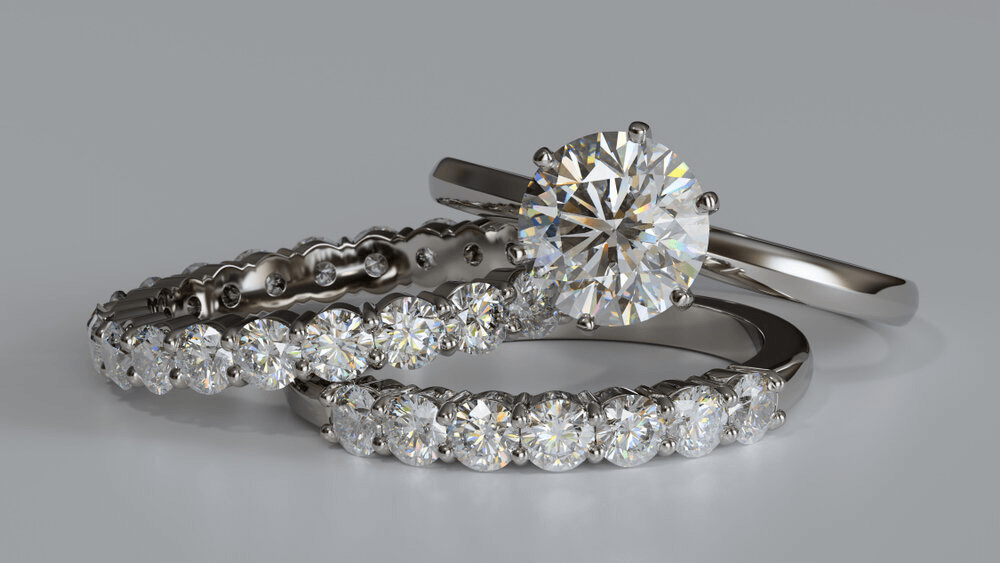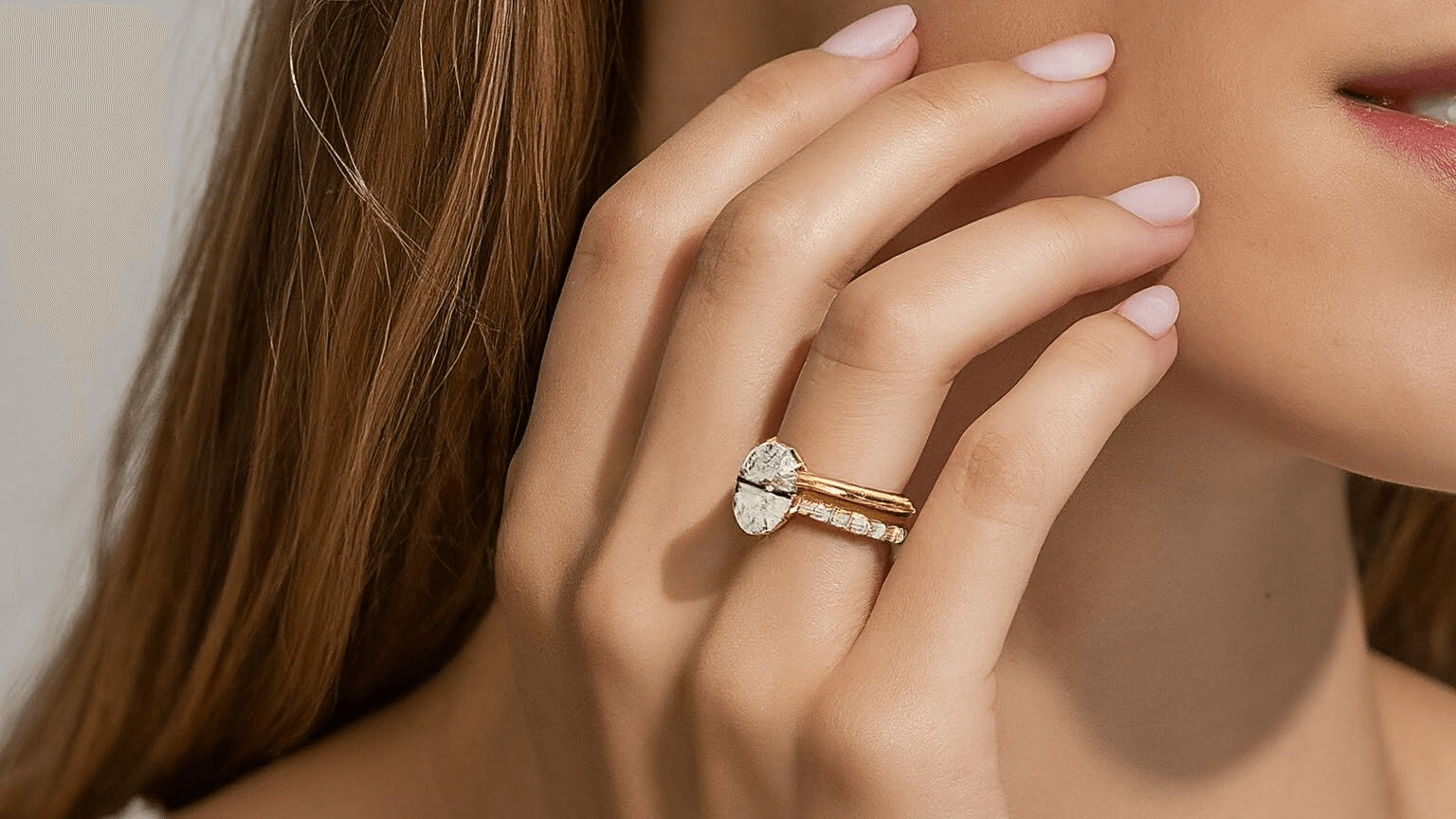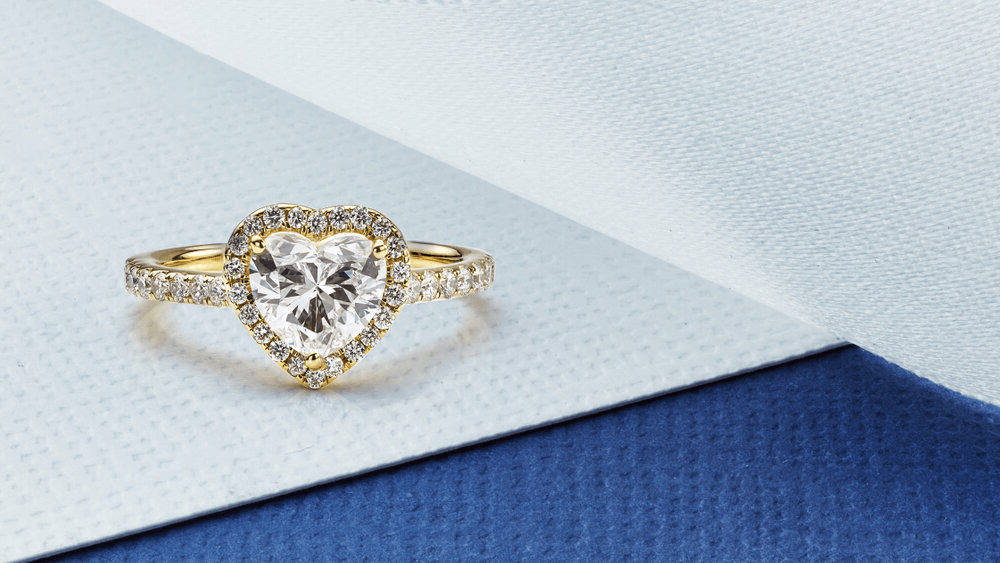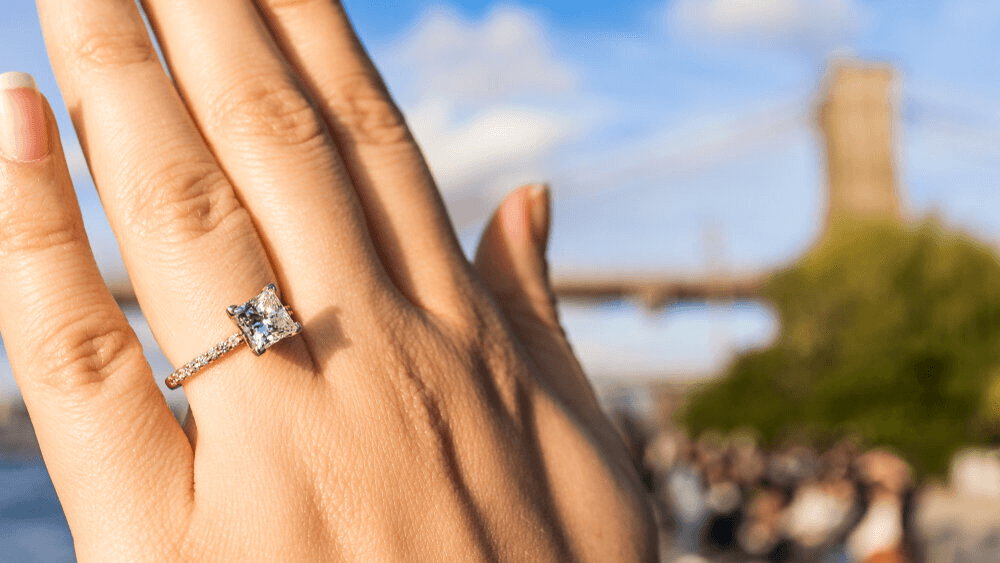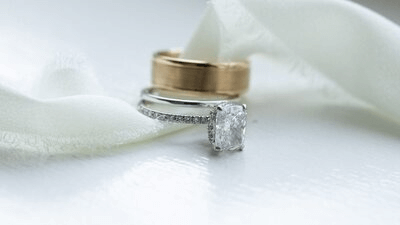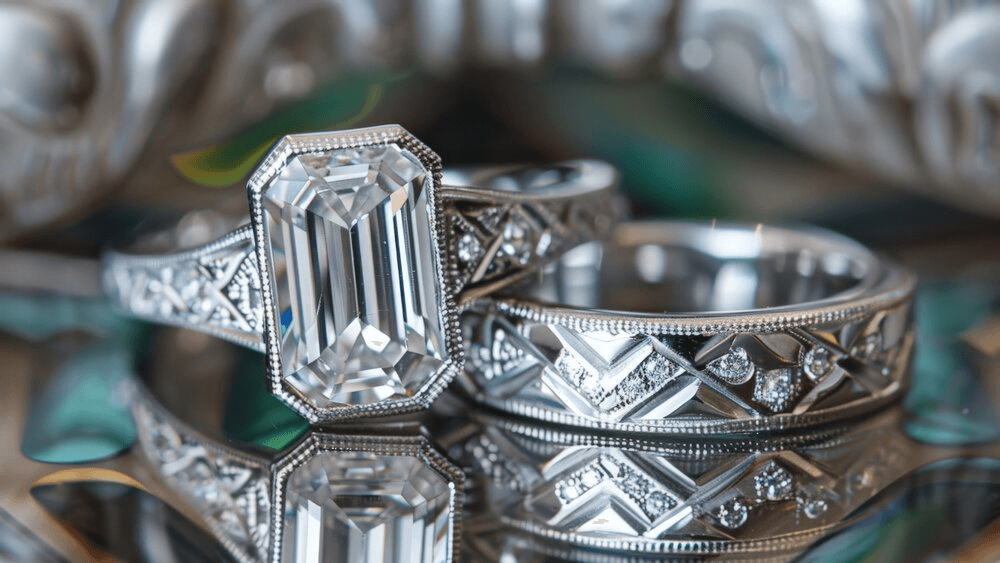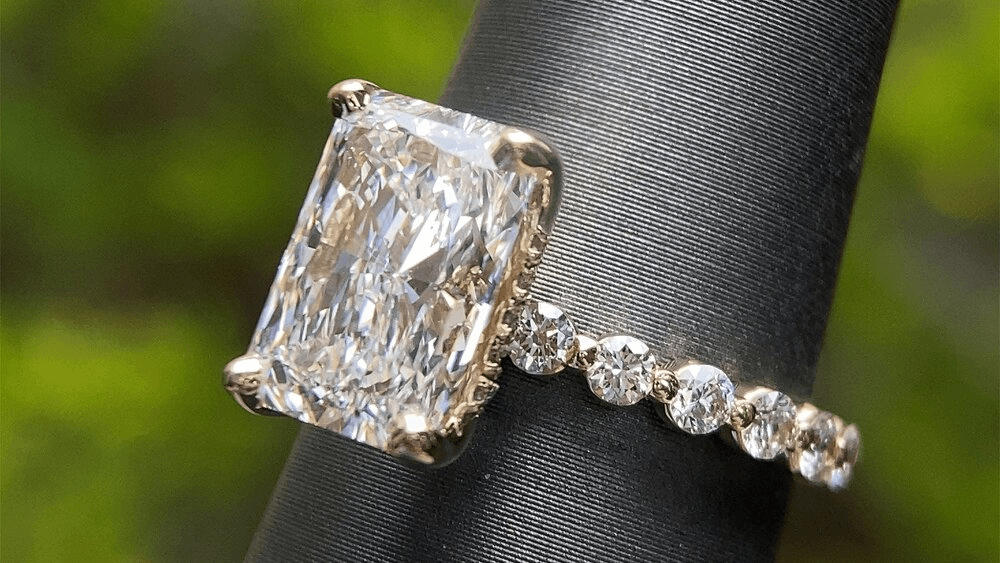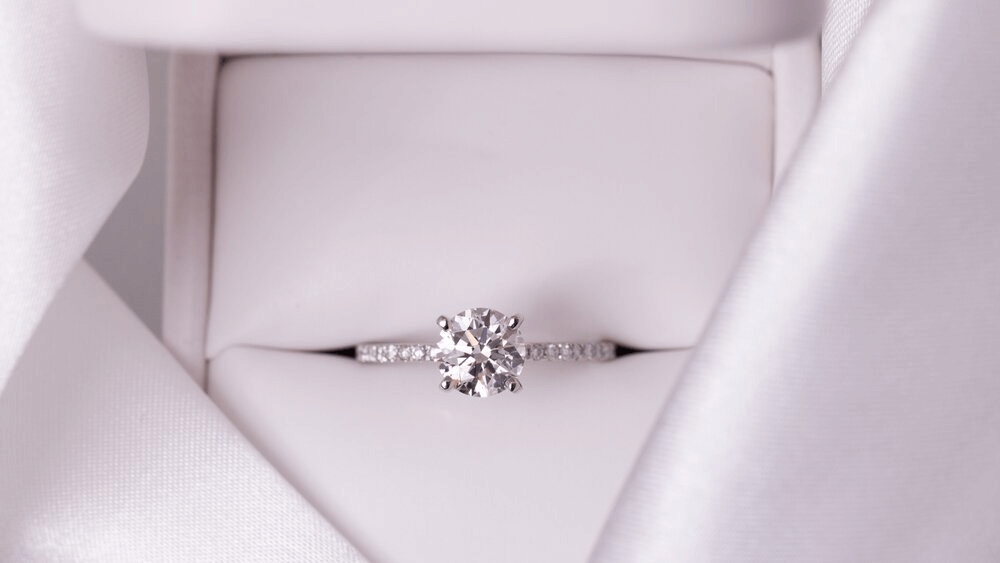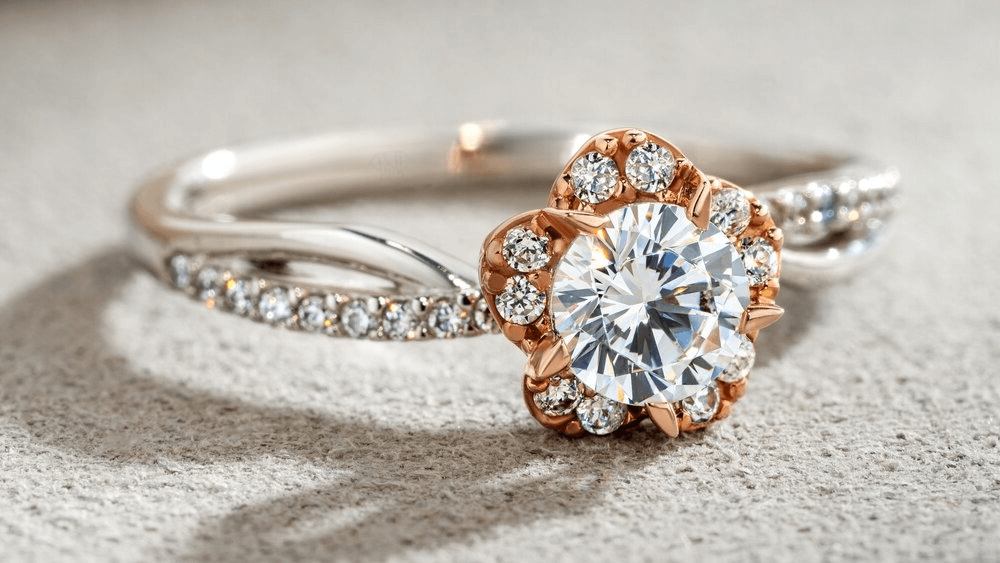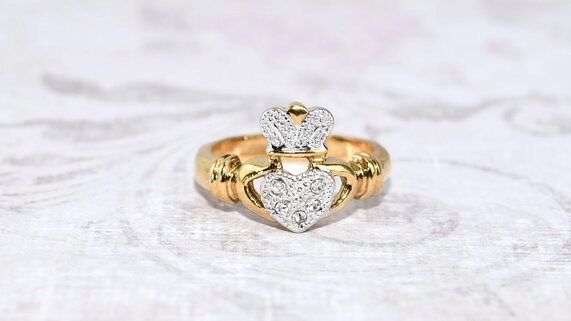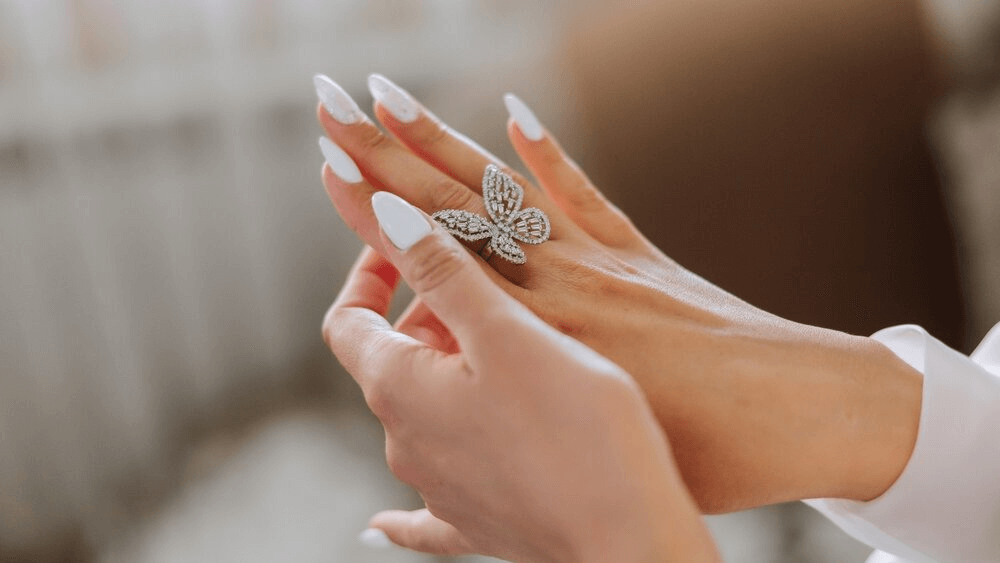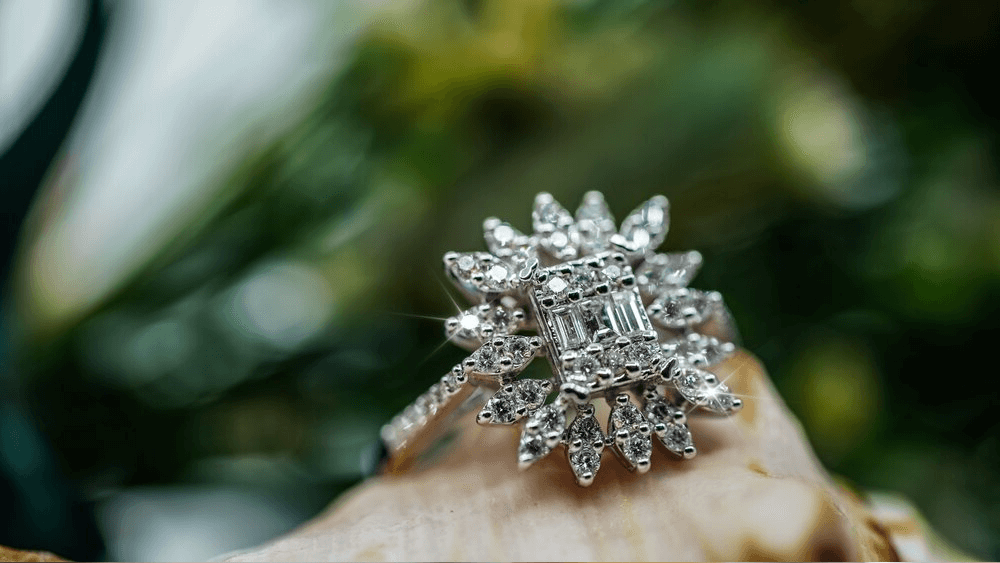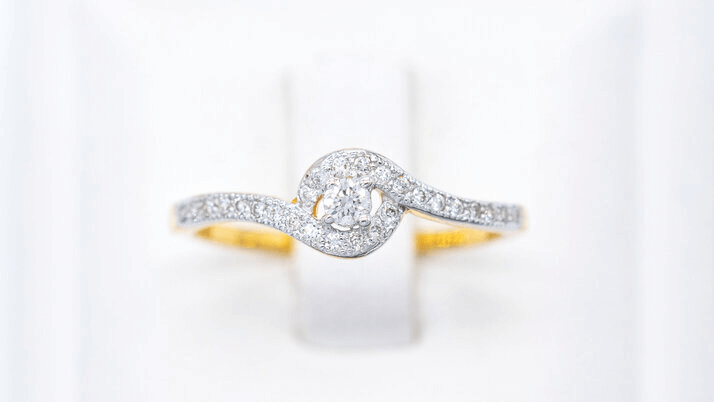Asscher Cut Diamond Rings: The Ultimate Showstopper

By Gary A.

Edited by Olivia H.
Published Aug 13, 2024
Edited on Mar 31, 2025
Asscher cut diamonds are a beautiful option if sparkle isn’t at the top of your priority list. Read our complete guide to Asscher cut engagement rings.

Navigate this guide:
- 7 Quick Tips for Finding Your Perfect Asscher cut Diamond Engagement Ring
- Introduction to Asscher Cut Engagement Rings
- The Rich History of Asscher Cut Diamonds
- Characteristics of the Asscher Cut
- Selecting Your Asscher Cut Engagement Ring
- Styling with Asscher Cut Rings
- Our Expert Take
- 7 Frequently Asked Questions About Asscher Cut Engagement Rings
Before we dive deeper into the specifics, here are some practical tips to help guide your decision-making process:
7 Quick Tips for Finding Your Perfect Asscher cut Diamond Engagement Ring
Tip 1. Understand the Asscher Cut:
- Asscher cuts are square with cut corners, known for their X-shaped pattern visible through the table. Understanding the cut’s unique characteristics can help you appreciate its beauty and identify quality pieces.
Tip 2. Check the Length-to-Width Ratio:
- Ideally, Asscher cut diamonds should have a length-to-width ratio of 1:1, ensuring perfect square symmetry. A well-proportioned diamond optimizes light return, enhancing the stone’s brilliance.
Tip 3. Prioritize Diamond Quality:
- Given the Asscher cut’s large table, inclusions and color imperfections are more noticeable. Choose a diamond with a high clarity and color grade to avoid visible flaws.
Tip 4. Examine the Setting:
- The setting should complement and protect the Asscher cut diamond. Popular settings for Asscher cuts are prong, bezel, and halo. Ensure the setting is secure and does not overshadow the diamond’s geometric beauty.
Tip 5. Look for Balanced Proportions:
- Balanced proportions in the diamond’s cut are critical for achieving optimal sparkle and brilliance. Look for Asscher cuts with appropriate table and depth percentages, usually a table of 60%-70% and a depth of 60%-70%.
Tip 6. Evaluate Side Stones:
- If the ring features side stones, they should complement the center Asscher cut diamond. Consider the color, clarity, and cut of the side stones to ensure they enhance the overall appearance of the ring without overpowering the main diamond.
Tip 7. Request Certification:
- Always ask for a grading report from a reputable gemological lab when purchasing an Asscher cut diamond. The certificate provides detailed information on the diamond’s 4Cs (Carat, Cut, Color, Clarity) and verifies its authenticity and quality.
Now that you’ve got these practical tips, use Jeweler AI below to find the perfect engagement ring that suits your style and budget:
Introduction to Asscher Cut Engagement Rings
Looking for a diamond that screams Art Deco glamour with a dash of modern edge? Enter the Asscher cut. This isn’t just any diamond shape – it’s a slice of history you can wear on your finger. Think Great Gatsby meets modern-day royalty, and you’re getting close to the allure of the Asscher.
The Rich History of Asscher Cut Diamonds
All diamond shapes have a long and fascinating history behind them, but the Asscher is among the most storied thanks to its popularity among Hollywood royalty.
Origins and Evolution
The Asscher cut didn’t just appear out of thin air. No, this beauty has a backstory that’d make even the most jaded jeweler swoon. Born in 1902 by the creative genius of Joseph Asscher, this cut was the iPad of its time – innovative, sleek, and utterly desirable. It did away with the elaboration and decadence of the other popular shapes of the time, offering a low-key and pared back study of a diamond on a par with the Emerald cut.
Iconic Moments and Famous Gems
Now, if diamonds could talk, Asscher cuts would have some stories to tell. From gracing the fingers of Hollywood royalty to actual royalty, these gems have seen it all. Remember Elizabeth Taylor’s dazzling collection? Well, her much-celebrated Krupp diamond, which was the feature of her engagement ring from Richard Burton, was an Asscher cut and remains one of the most famous examples of the shape to this day.
Need something more famous than that? The Cullinan VI diamond, part of the British Crown Jewels and housed in the Tower of London, weighs in at 11.5 carats and demonstrates how beautiful the cut can be.
Characteristics of the Asscher Cut
The Asscher follows a square shape with cropped corners, creating an octagonal outline that’s as mesmerizing as it is unique. But the Asscher isn’t just a pretty face – it’s a feat of geometric precision that’d make your high school math teacher proud.
Geometric Perfection: Understanding the Cut
Cut well, the Asscher’s step-cut facets create a “hall of mirrors” effect that’s less about in-your-face sparkle and more about subtle, sophisticated brilliance. It’s not shouting for attention; it’s confidently commanding it.
Selecting Your Asscher Cut Engagement Ring
Not all Asscher cut diamonds are created equal, and getting the very most out of your money means understanding the basics of diamond quality – and value.
Navigating the 4Cs for Asscher Cuts
Let’s talk shop for a second. When it comes to Asschers, clarity is king (well, second only to cut, of course). That step-cut design? It’s like a spotlight on your diamond’s interior. So aim high on the clarity scale – your future self will thank you.
That said, you don’t have to go so high on the scale you get vertigo. For a 1 carat diamond (or thereabouts), a clarity grade of VS2 or SI1 – or even SI2 – should be fine. For larger diamonds, aim for VS1, but aim to avoid the VVS grades unless your diamond is really heavy.
Color is also more important for Asschers than it would be for, say, the round cut. As always, however, a diamond from the Near Colorless range – with a gentle emphasis on those higher grades – will be a great choice.
Choosing the Right Setting for Your Ring
Setting an Asscher is like framing a masterpiece. You want something that’ll showcase its unique geometry without stealing the show. Think clean lines and minimalist designs. Or go full Gatsby with an ornate Art Deco setting. The choice is yours.
We love the look of an Asscher cut diamond paired with a lofty, architectural cathedral setting. From the side, the ring will carry a very imposing, grand impression that will make a big statement on the finger.
Then again, you don’t need to err on the side of minimalism just because you’ve opted for what is (arguably) the most minimalist of diamond cuts. An Asscher can look very stunning paired with a square halo, which will balance its ‘hall of mirrors’ effect with the bright, vibrant, glittery sparkle of the round cut melee stones.
Styling with Asscher Cut Rings
One thing’s for sure: it’s got to fit your partner’s style.
Metal Choices and Design Considerations
White metals like platinum or white gold? They’ll give your Asscher that icy, modern edge. But don’t discount the warmth of yellow or rose gold – they can add a vintage vibe that’s totally swoon-worthy. It’s all about what makes your heart skip a beat.
Our Expert Take
Choosing an Asscher cut engagement ring isn’t just picking a diamond – it’s making a statement. It says you appreciate the finer things, have an eye for detail, and aren’t afraid to stand out from the crowd. So go ahead, embrace your inner diamond connoisseur. After all, who says you can’t wear a piece of history and turn heads while doing it?
7 Frequently Asked Questions About Asscher Cut Engagement Rings
- What makes the Asscher cut unique?
- The Asscher cut is known for its stepped square shape, deep pavilion, and high crown, creating a captivating “hall of mirrors” effect. Its distinctive features include cut corners that combine the square cut’s clean lines with the stability of a more rounded structure.
- How does the Asscher cut differ from the Emerald cut?
- While both cuts feature stepped facets, the Asscher cut is square with deeper pavilions and higher crowns, offering a more pronounced “hall of mirrors” effect compared to the rectangular Emerald cut, which is known for its understated elegance.
- Are Asscher cut diamonds more expensive?
- Asscher cut diamonds can be more expensive per carat than some other shapes due to their complex cutting process and the high-quality rough diamonds required. However, prices vary widely based on the diamond’s specific 4Cs (Carat, Cut, Color, Clarity).
- What is the best setting for an Asscher cut engagement ring?
- Solitaire, halo, and prong settings are popular choices for Asscher cut diamonds, as they highlight the cut’s unique features. A simple setting can emphasize the diamond’s geometric beauty, while a halo setting can enhance its size and sparkle.
- How do I choose the right Asscher cut diamond?
- Prioritize clarity and color, as the large open table of an Asscher cut can make inclusions more visible. Look for a well-proportioned cut with a length-to-width ratio close to 1:1 to ensure a balanced and symmetrical appearance.
- Can Asscher cut diamonds appear larger than they are?
- Like all diamond shapes, the perceived size of an Asscher cut diamond can be influenced by its setting and cut proportions. A well-cut Asscher diamond with a larger table or a halo setting may appear larger than its actual carat weight.
- How should I care for my Asscher cut engagement ring?
- Regular cleaning with mild soap and water, using a soft brush, and annual check-ups with a professional jeweler to inspect the setting and prongs will help maintain your Asscher cut engagement ring’s beauty and integrity.
Find your perfect Asscher cut ring with Jeweler AI – where elegance meets precision.
FOLLOW-UP GUIDE SERIES





